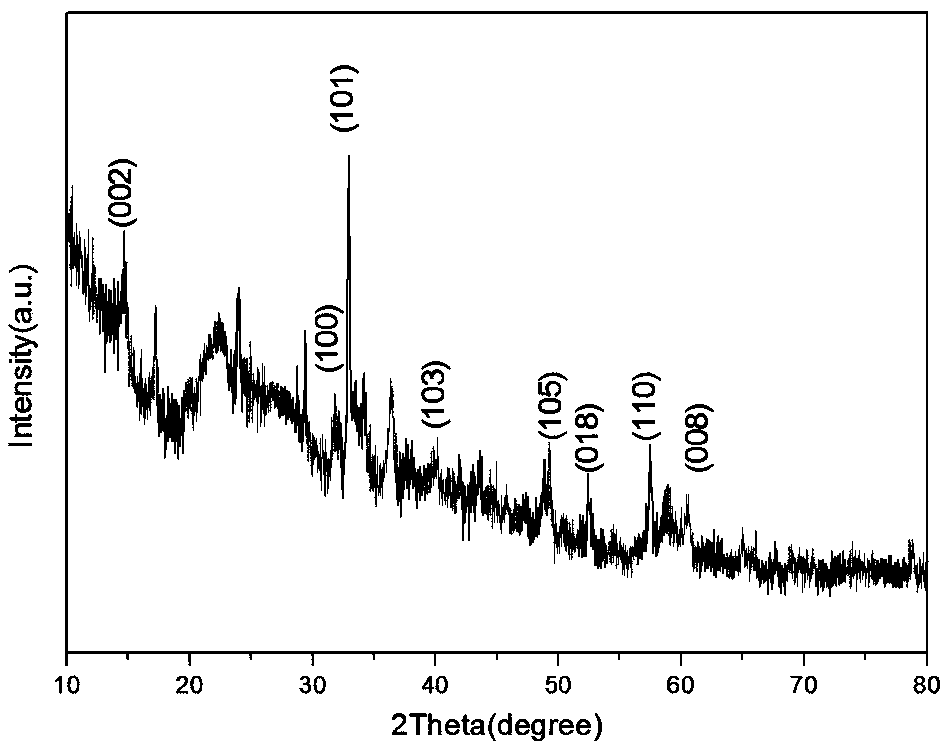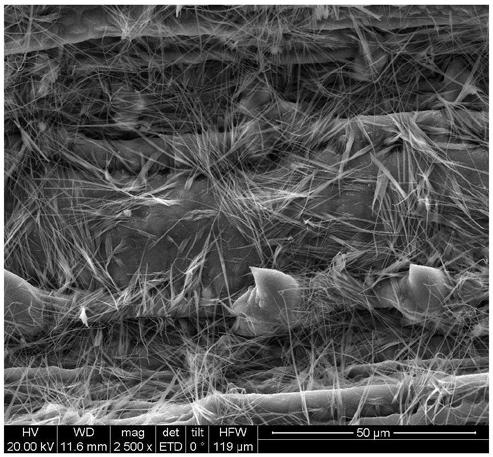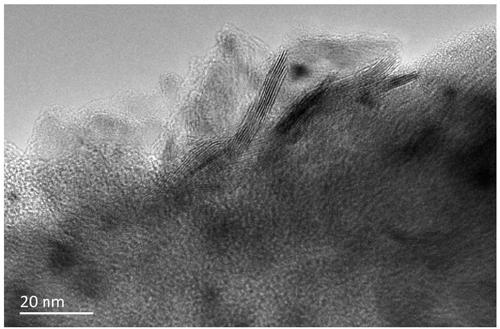Photocatalytic composite material as well as preparation method and application thereof
A composite material and photocatalytic technology, applied in the field of photocatalytic composite materials and their preparation, can solve the problems of large power consumption, the need to improve the separation ability, and the limited application of transition metal sulfide semiconductor materials.
- Summary
- Abstract
- Description
- Claims
- Application Information
AI Technical Summary
Problems solved by technology
Method used
Image
Examples
preparation example Construction
[0024] The invention provides a method for preparing a photocatalytic composite material, comprising the following steps:
[0025] (1) Plant leaves are soaked and pretreated to obtain template biomass;
[0026] (2) impregnating the template biomass obtained in the step (1) in a molybdenum source-sulfur source aqueous solution, and obtaining a composite material precursor after the impregnation;
[0027] (3) Calcining the composite material precursor obtained in the step (2) to obtain a photocatalytic composite material.
[0028] In the invention, plant leaves are soaked and pretreated to obtain template biomass. The present invention has no special limitation on the type of the plant leaves, and the plant leaves well known to those skilled in the art can be used, specifically, arrow bamboo leaves, willow leaves, Ruo bamboo leaves, golden bamboo leaves or purple bamboo leaves.
[0029] In the present invention, the soaking pretreatment preferably includes the following steps:...
Embodiment 1
[0043] A preparation method of photocatalytic composite material:
[0044] (1) pretreating golden bamboo leaves through soaking to obtain template biomass;
[0045] (2) After mixing 200 mL of a molybdenum source-sulfur source aqueous solution with a sodium molybdate concentration of 0.05 mol / L and a thiourea concentration of 0.10 mol / L with the above-mentioned 10 g template biomass, immerse at 25°C for 72 hours, and take out the impregnated product , followed by cleaning and drying to obtain the precursor of the composite material;
[0046] (3) Under a nitrogen atmosphere, the temperature was raised to 700° C. for 120 minutes at a heating rate of 3° C. / min and calcined for 120 minutes, and then naturally cooled to room temperature to obtain a photocatalytic composite material.
[0047] The soaking pretreatment of the golden bamboo leaves includes: (a) the golden bamboo leaves are mixed with the first medicament (dilute hydrochloric acid with a mass concentration of 5% and abs...
Embodiment 2
[0054] A preparation method of photocatalytic composite material:
[0055] (1) Willow leaves are soaked and pretreated to obtain template biomass;
[0056] (2) After mixing 120 mL of a molybdenum source-sulfur source aqueous solution with an ammonium molybdate concentration of 0.10 mol / L and a sodium sulfide concentration of 0.20 mol / L with the above 5 g template biomass, immerse at 27 ° C for 72 hours, and take out the impregnated product , followed by cleaning and drying to obtain the precursor of the composite material;
[0057] (3) Under a nitrogen atmosphere, the temperature was raised to 500° C. for 150 minutes at a heating rate of 3° C. / min and calcined for 150 minutes, and then naturally cooled to room temperature to obtain a photocatalytic composite material.
[0058] The soaking pretreatment method of described willow leaves is the same as the soaking pretreatment parameters of golden bamboo leaves in Example 1.
[0059] Applying the photocatalytic composite materi...
PUM
 Login to View More
Login to View More Abstract
Description
Claims
Application Information
 Login to View More
Login to View More - R&D
- Intellectual Property
- Life Sciences
- Materials
- Tech Scout
- Unparalleled Data Quality
- Higher Quality Content
- 60% Fewer Hallucinations
Browse by: Latest US Patents, China's latest patents, Technical Efficacy Thesaurus, Application Domain, Technology Topic, Popular Technical Reports.
© 2025 PatSnap. All rights reserved.Legal|Privacy policy|Modern Slavery Act Transparency Statement|Sitemap|About US| Contact US: help@patsnap.com



